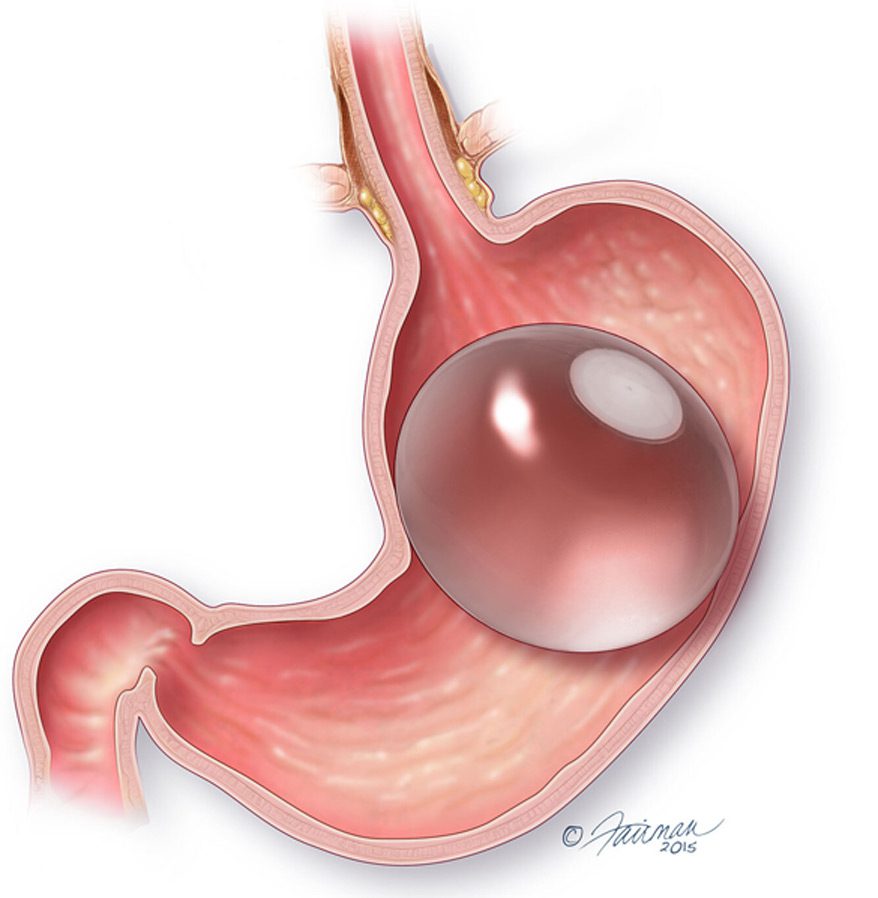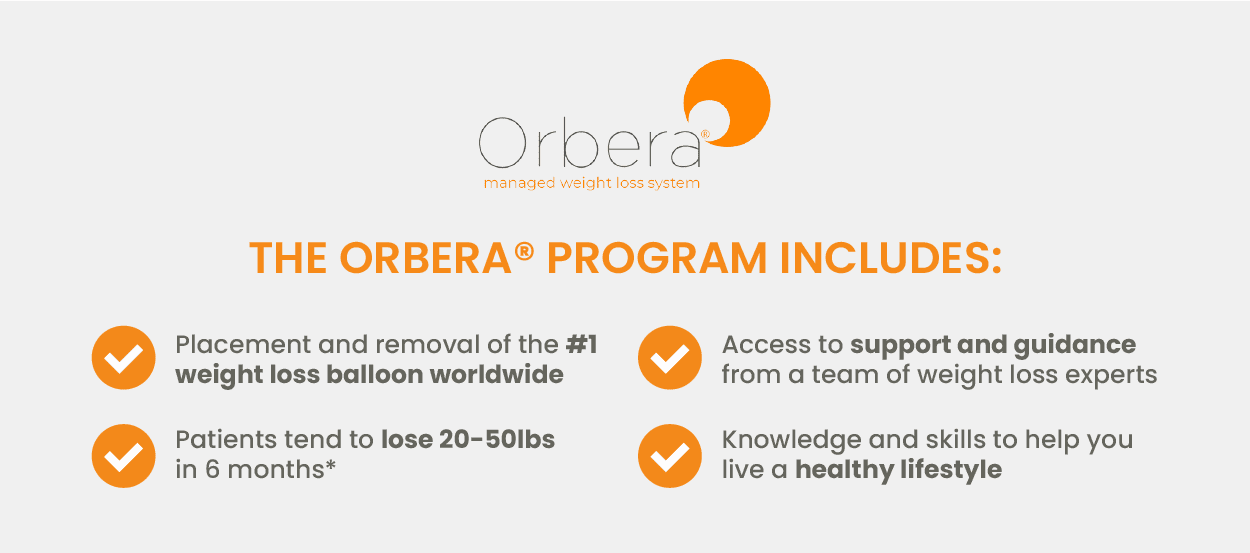
Orbera is an intragastric weight loss program that has been shown to help patients achieve 3.1 times more weight loss than diet and exercise alone.
Benefits of Orbera
Compared to other weight loss programs and surgeries, Orbera offers the following benefits:
- Non-permanent
- Non-surgical
- Minimally invasive
- FDA-approved
- Safe and effective
- Proven results
Who is a Candidate For Orbera?
To receive Orbera, the patient must be willing to commit to a 12-month program that begins with the placement of Orbera and continues for an additional six months. Patients will need to follow a personalized diet and exercise plan to experience significant weight loss results.
Losing weight and keeping it off requires hard work and effort. This is why each patient will be supervised and supported throughout this program by a team of physicians, psychologists, and dieticians. This team will help the patient make and maintain important changes in their eating and exercise habits.


Patients should speak to their physician to find out if they are eligible for Orbera. During the initial consultation, the doctor will review the patient’s medical history and perform a physical examination. The physician will also check for internal factors, such as stomach irritation or ulcers, during the placement procedure. The presence of these conditions may disqualify a patient from receiving Orbera.
Patients who are pregnant, planning on becoming pregnant within six months, or breastfeeding should not receive Orbera.
What to Expect During Orbera
The placement procedure is performed on an outpatient basis and can take about 20 minutes.
The physician will begin by performing a diagnostic endoscopy to ensure the patient is in good health and physically able to receive the Orbera. The patient will then be mildly sedated.
A deflated gastric balloon will be inserted through the esophagus and into the patient’s stomach. Then, the physician will use a syringe to fill the balloon with a sterile saline solution until it’s the size of a grapefruit.
The Orbera balloon will be inside the patient’s stomach for the next six months, helping to reduce the amount of food the patient can eat, and re-training their brain to better anticipate the feeling of being full.
During this time, patients will need to maintain open and constant communication with their support team to maximize weight loss. Patients will need to attend appointments with their physician, dietician, fitness trainer, and psychologist.
During these first six months, patients will see the most drastic results, losing 20 to 50 pounds (sometimes even more).
After six months of adjusting diet and regular exercise, the patient will be ready to have the balloon removed. The removal procedure is very similar to the placement process, only taking about 20 minutes.
For the remaining six months of the program, patients will continue working closely with an Orbera specialist to ensure they’re following a personalized diet and exercise program.
Potential Risks And Side Effects
The potential complications of Orbera include stomach discomfort, continuing nausea, vomiting, abdominal or back pain, acid reflux, bacterial growth in the fluid filling the balloon, and infection that may prematurely deflate the balloon.







